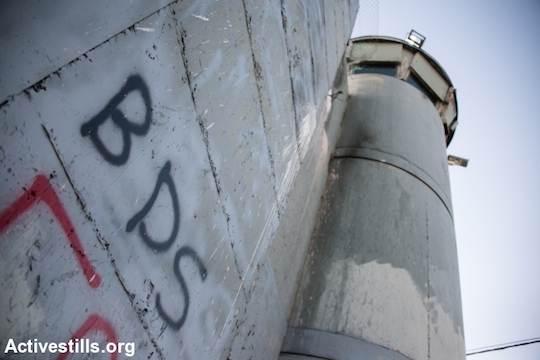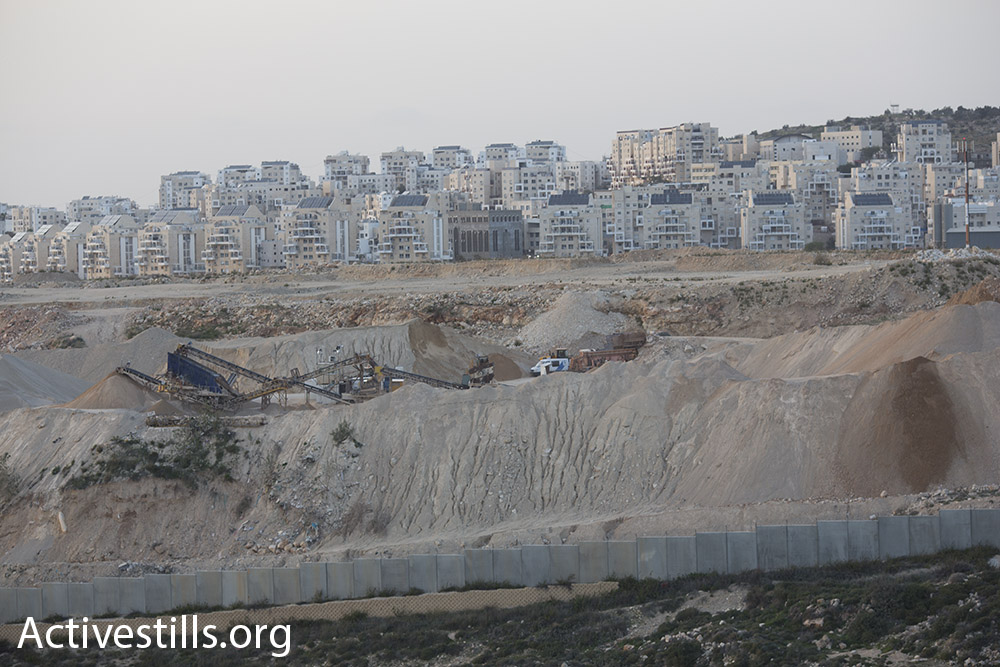There is no use convincing the Jewish public to support the two-state solution, especially when over 500,000 settlers live beyond the Green Line and there is no guarantee that a Palestinian state will not be the source of terror against Israelis. The only way forward is to grant full equality to all.
By Yonatan Amir

Every time I say that the two-state solution is no longer realistic, and that we need to think about new approaches to solve the Israeli-Palestinian conflict, center-left voters respond with anger, condescension and pity. They claim that this is a far-fetched idea, not to mention dangerous and cruel (!) — an idea that proves the desire to destroy the State of Israel, and is disconnected from the will of the “sane Jewish majority.”
Let’s start with a reminder: the new Knesset includes 107 members belonging to Jewish parties. Seventy-eight of them oppose the two-state solution, and are divided between those who have no qualms about their stances (Likud, Jewish Home, Kulanu, Shas, United Torah Judaism and Yisrael Beiteinu), and a minority that talks about a solution but creates obstacles to ever achieving one (Yesh Atid). On the other side we have the supporters of two states: five MKs from Meretz and 24 from the Zionist Camp. All in all, 29 versus 78.
These are the statistics. We aren’t talking about a difference of 2-3 seats that could make a difference in the future, not a “majority,” not “sane,” no “support” and no “solution.” The majority of Israelis oppose a two-state solution. Welcome to the negligible minority.
‘Everything will be okay’
Since the end of the 90s, there has been not a single election result that did not demand some form self-examination from the Israeli Left. But instead of formulating a new agenda, the Left deals, again and again, with the question of how to get new voters to support old ideas. This is a logical step when considering issues such as civil rights, gender equality and allocating the budget to different cultural groups. Not when we are dealing with concrete political solutions.
Let’s put aside the Left’s historical colorblindness toward Israel’s periphery, and focus on the Israeli-Palestinian story, in which it takes the correct position. It often feels like if only the leaders from the Israeli Left learn to speak to the people in a way that will allow to replace the current leadership, everything will work out. But as my friend Eilat Maoz wrote, Israel doesn’t have a leadership problem — it has a regime problem. Israeli sovereignty is based on a regime of separation, which was formed and maintained for dozens of years by both right and left-wing governments. The Zionist Left’s solution for forceful separation is separation by consent. This solution was formed in the 1970s, and was partially implemented in the 90s.

I will not go into all the reasons why it failed during the Oslo process. I will only say that even if there was a period when this solution was relevant — and this too should be taken with a grain of salt — five decades of military rule, 500,000 settlers, a failed agreement and one Gaza disengagement later, it is enough to simply glance at the maps and see how scant the chance of reaching an agreement is.
Even if we assume that we can convince a large percentage of settlers to evacuate the West Bank, and assuming the Israeli economy will be able to deal with the price, and assuming that a state that was unable to take care of thousands of Gaza evacuees will be able to take care of hundreds of thousands of evacuees from Judea and Samaria, and assuming that both sides will agree to allow visits to each other’s holy sites, and assuming the Palestinians will be satisfied with a demilitarized 21 percent of their historic homeland, and assuming that they will agree to give up on the right of return, and assuming we find a solution that will reconnect Gaza and the West Bank, and assuming that the agreement will be accepted by the majority of Palestinians (and not just a handful of suits in Ramallah). Even if we assume all these to be true, after Oslo and the disengagement, who can guarantee that missiles won’t strike central Israel a month after an agreement is signed? The Zionist Left has no good answer beyond its belief that things will eventually work out. So is it really a surprise that so few buy their plan?
As opposed to the Zionist Left, the Right actually understands that the Palestinians and their demands aren’t going anywhere. The problem is that the Right doesn’t offer any logical plan to deal with the situation. As a result, what is called “Israeli policy” today is nothing more than a hysterical combination of Netanyahu-style paranoia and childish, folksy behavior à la Naftali Bennett. What we end up with are mantras about maintaining Israeli security alongside infantile slogans such as “the eternal people do not fear a long road.”
The fact that the Left is terrified of this is clear. What is astonishing is that there are groups in the Right that recoil from this oppressive, siege-mentality attitude, and are interested in promoting democracy, coexistence and equality for our neighbors. But without a real political home that will work to that end, they remain limited by their political parties.
The Israeli regime oppresses and discriminates against the Palestinian population. The settlements, which are supported and endorsed by the legal system, are the crown jewel of this discrimination, although we must be cautious of pointing the blame solely at them. The massive Land Day protests erupted in 1976 took place in the Galilee, not in the West Bank, and the economic fruits of the occupation benefit those in Tel Aviv, Jerusalem and Kfar Saba. This does not mean that the Left needs to idealize or whitewash the crimes of the settlement project. It means that after almost 50 years of occupation and the establishment of the first settlements, the time has come to think about how to move forward while recognizing their existence.
Most of the settlers are far from the violent messianism of Kahane. They came to the settlements because of their belief in God or settling the land, a desire for better quality of life, or simply the option to buy a home for a decent price. We can disagree with them, but we need to start learning how to work with what we’ve got. Speak to the average settler about evacuation because “it is the decent price to pay so to make it better for all of us,” and they will slam the door in your face. Speak with them about equality for the Palestinians they meet every day, and you will find the beginnings of cooperation.
Speak with Kahlon, speak with Shas
In a televised debate that took place before the elections, the head of the Joint List, Ayman Odeh, asked Shas leader Aryeh Deri to form an alliance of the oppressed. Like Orly Noy wrote, Deri quickly turned into Yair Lapid, telling Odeh that it is a shame that the Arab leaders don’t care for their community. It was a disappointing replication of the claims made about his sector, although in retrospect, had Deri agreed to a Mizrahi-Arab alliance, Eli Yishai and Baruch Marzel would have likely passed the election threshold and made it into the Knesset.
Either way, now that the campaigns are over, we must work together. Currently, the Right has no plan, and the Left has a terrible one. If the Left is interested in being relevant and have a positive effect, it needs to fill this space and start working differently. The struggle for equality on both sides of the Green Line touches on relations between religious and secular, Ashkenazi and Mizrahi, veteran Israeli residents and new immigrants, no less than relations between Jews and Arabs. This struggle can be conducted with Kahlon and Deri, with the ultra-Orthodox Litzman, with the more moderate parts of Likud, Yisrael Beiteinu and Jewish Home. And, of course, with the Joint List.

Instead of organizing conferences where people mingle and discuss ways to divide the land, a Left that wants to have political influence must work with the Right to advance equal master plans in Arab villages. Instead of entrenching ourselves in its comfort zone, it must work with people and organizations that promote dialogue and coexistence.
Instead of chasing after the well-respected general turned successful arms dealer who can explain that stopping negotiations on a two-state solution only isolates Israel and harms it economically, it must join those on the Israeli Right and the Palestinian Left in order to advance equality in the workforce and education. Instead of trying to sell the Right on fantasies of dividing the land, which are destined to fail, it must work with it to bring about one state with equal rights for all residents on both sides of the Green Line.
This move will not abrogate Palestinian national aspirations. It will not put an end to either Jewish or Arab terror and will not solve all of Israel’s essential problems. But it will help build a more stable and fair infrastructure based on democracy and equality, which so crucial for the existence of a healthy society.
Yonatan Amir is one of the editors-in-chief of the Erev Rav journal of arts, culture and society. This article was first published on +972′s Hebrew-language sister site, Local Call. Read it in Hebrew here.


